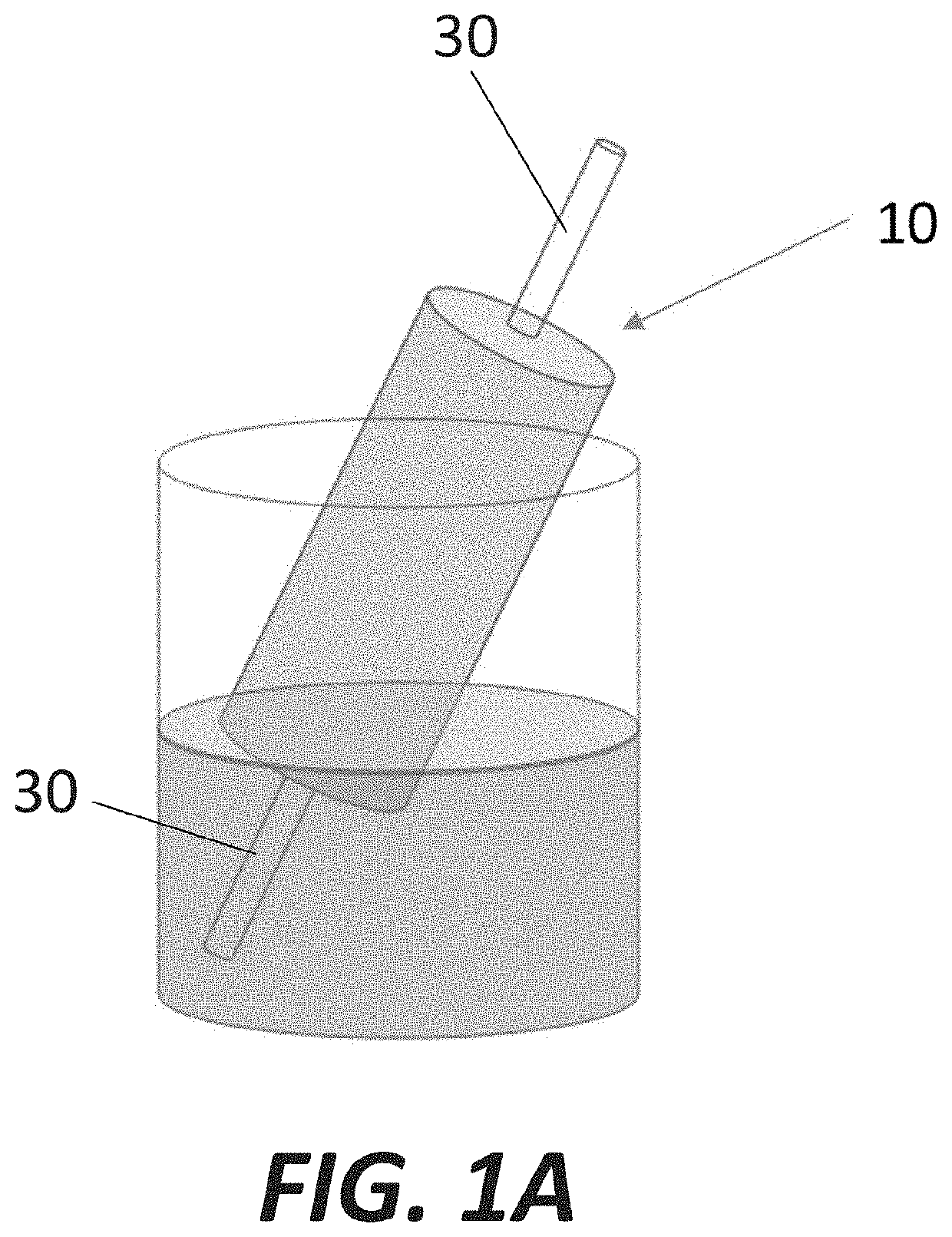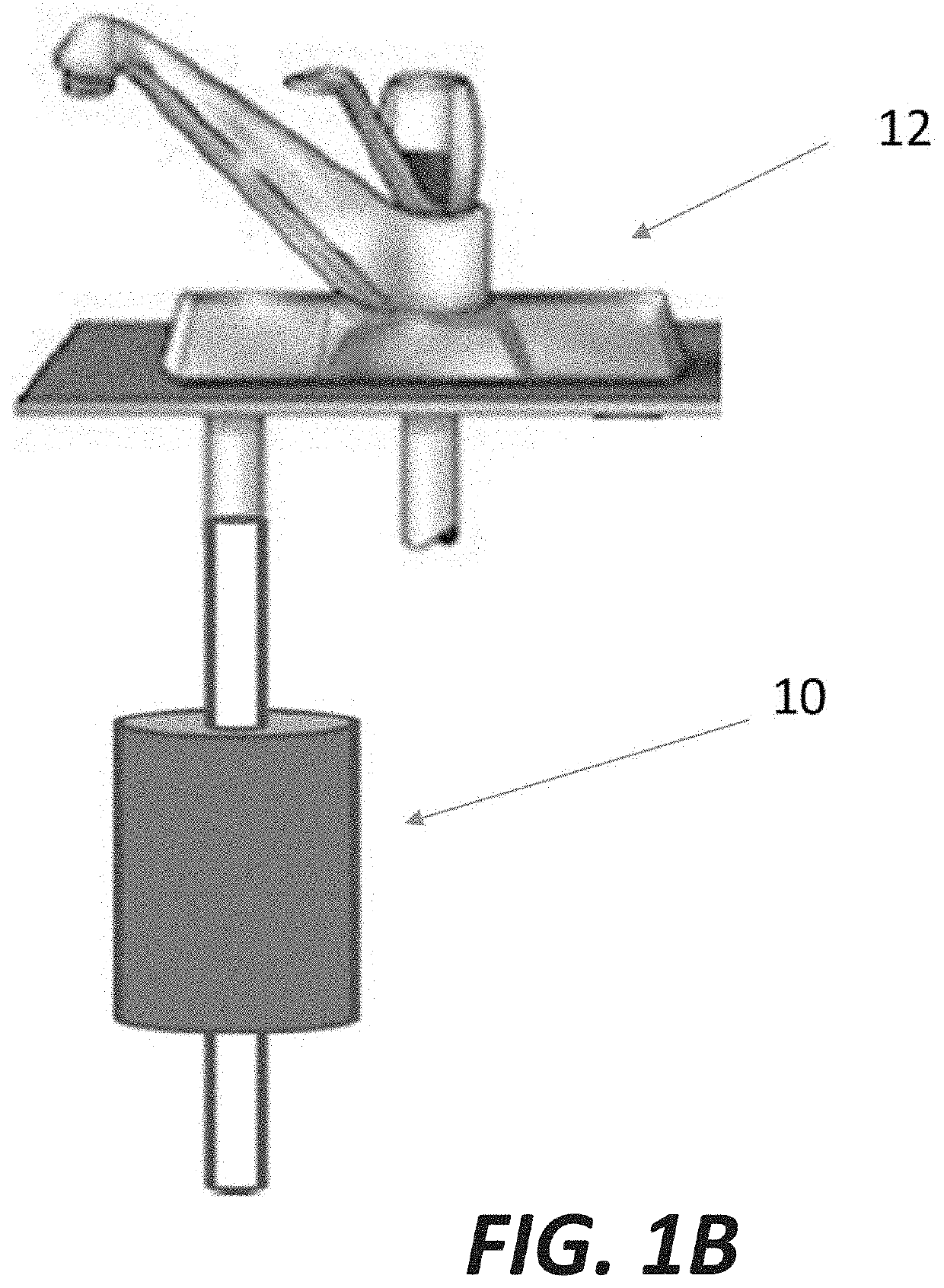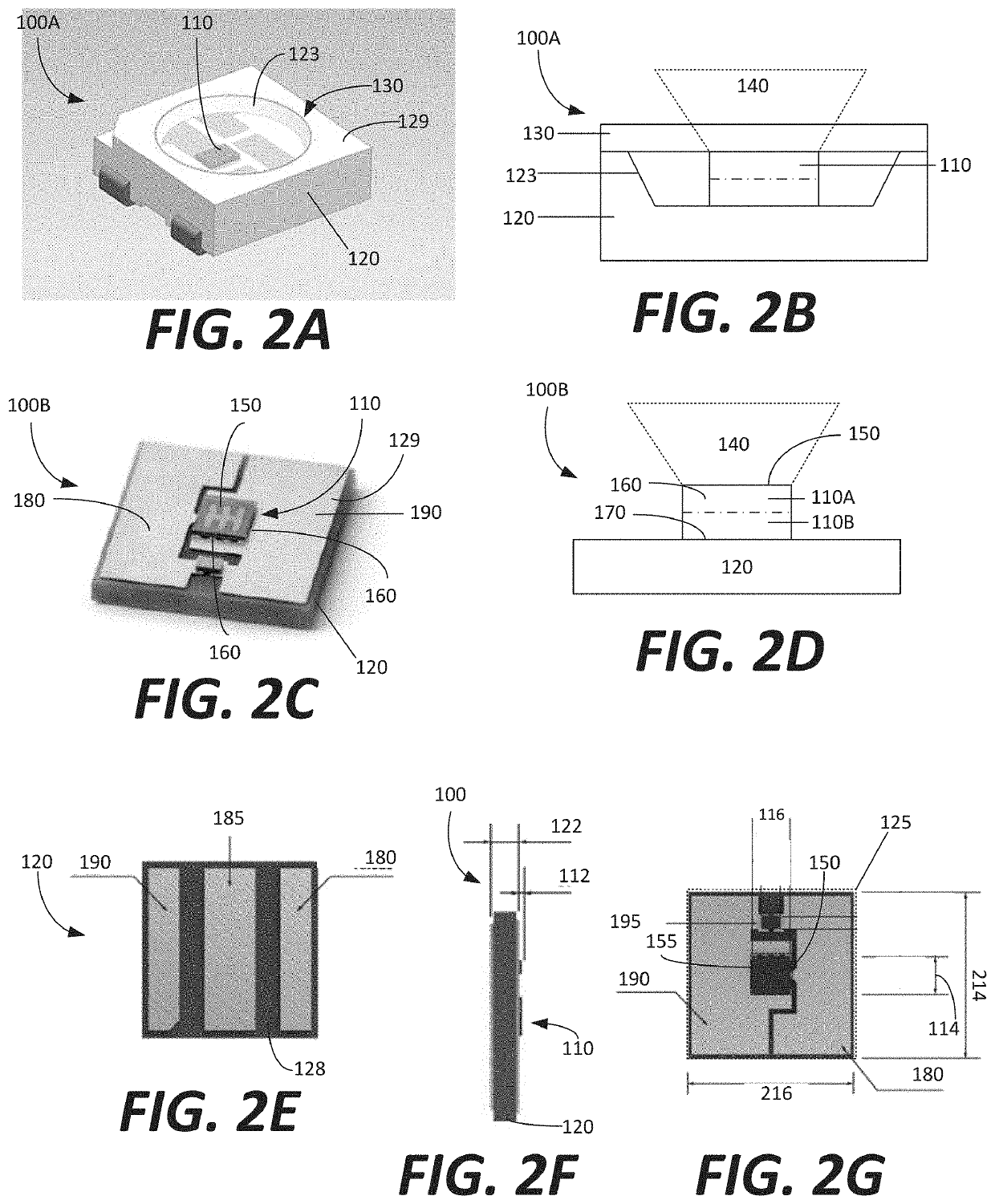Fluid treatment reactor
a technology of fluid treatment reactor and reactor, which is applied in the direction of specific water treatment objectives, chemistry apparatus and processes, and diseases, etc., can solve the problems of virtually destroying or rendering substantially harmless the dna of many, substantially prohibiting the growth and/or reproduction of microorganisms, and virtually destroying them or destroying them. , to achieve the effect of reducing the amount of photons reflected
- Summary
- Abstract
- Description
- Claims
- Application Information
AI Technical Summary
Benefits of technology
Problems solved by technology
Method used
Image
Examples
Embodiment Construction
[0005]In accordance with one embodiment of the invention, a system for disinfecting fluid includes a UVC LED. The UVC LED includes an LED chip configured to emit UVC radiation and a package coupled with the LED chip. The LED chip has a top surface that defines a chip top surface area. The top surface is formed from a semiconductor material having an index of refraction. The fluid reactor has at least one wall that defines a chamber configured to contain the fluid. The at least one wall has an aperture configured to receive UVC radiation into the chamber. The aperture extends through the at least one wall. The aperture has an aperture area that is (1) smaller than a top surface area of the package and (2) equal to or larger than the chip top surface area.
[0006]The UVC LED may be of the type having an exposed top surface. Alternatively, the UVC LED may be on the type having a lidded top surface. The system may be configured to couple more than 60% of the total output radiation of the ...
PUM
 Login to View More
Login to View More Abstract
Description
Claims
Application Information
 Login to View More
Login to View More - R&D
- Intellectual Property
- Life Sciences
- Materials
- Tech Scout
- Unparalleled Data Quality
- Higher Quality Content
- 60% Fewer Hallucinations
Browse by: Latest US Patents, China's latest patents, Technical Efficacy Thesaurus, Application Domain, Technology Topic, Popular Technical Reports.
© 2025 PatSnap. All rights reserved.Legal|Privacy policy|Modern Slavery Act Transparency Statement|Sitemap|About US| Contact US: help@patsnap.com



